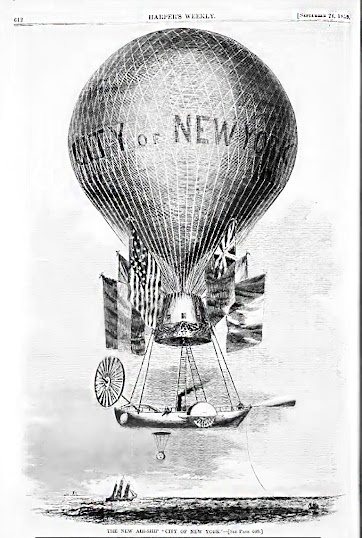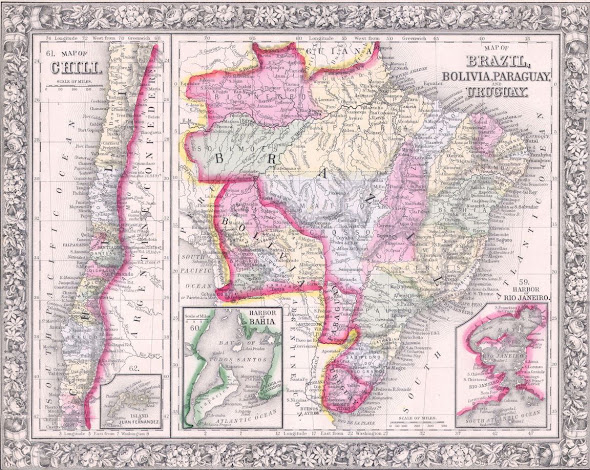Old Times There Could Be Rotten--Plantation Life
Old Times There Could be Rotten
Southern Plantation Life
Part 1 of Several Entries on Slavery
The modern stereotype of a Southern
plantation as an enormous “Tara” like mansion surrounded by groves of magnolia
and oak set in endless fields of cotton is only partly accurate. Admittedly, this writer’s 3 times great
grandparents on my mother’s side did live such a life. But they were a minority among the elite
planters of Warren County, North Carolina.
The
1860 census found Warrenton, county seat of Warren County, to be home to 2,600
souls, black and white, a number the population has yet to reach again. In contrast to the present, it was the
richest place in the state, not, as now, one of the poorest.
Cherry Hill is typical of such a mansion. Twelve feet high ceilings with thick lathe and plaster walls to keep things cool. A central hallway from the front door to the back allows breeze to pass through the entire house. On cold days, a screen was stretched across the central hall to block the cold air from rushing in. Each room has a fireplace and the house has multiple chimneys.
While some furniture was "store bought'" this area of Warren County had several enslaved men who had become much in demand for their cabinetry skills. Of course, with 12 ft ceilings, the furniture they built could be--and was--massive.
Gentlemen planters, and certainly
their wives, preferred living in town with easy access to stores, the train
station, short distances for social visits and so on. Planters would ride out
from town in the morning to view and supervise their fields. A big country
house would simply take up acres that could be used for planting. Many planters
owned widely separated plots of land, so a central location made even more
sense.
Country and urban planters were not
the only sort. Some planters were
absentee and never or seldom saw their plantation and slaves. Other planters
might visit once a year before returning North or wherever they lived. Northern
investors might live in “free soil” states, but that did not prohibit them from
owning slaves and land in the South.
One
of the richest men in America at the time, Pearce Butler, lived in a
magnificent mansion in Philadelphia while drawing his wealth from the half
dozen plantations and hundreds of slaves his grandfather deeded him.
In
the absence of the owners, overseers were hired. Paid an average of $375 per annum (plus bonus
if lucky) overseers were often barely literate. They were not paid for elegant
prose, though. They were paid to squeeze the maximum possible amount of labor
out of the enslaved people under them.
Work equaled profit.
Mercy did not pay nearly as well as the lash. A kindly overseer would soon find himself an out-of-work overseer without a good letter of recommendation.
On
larger plantations an overseer might well have one or more assistant overseers.
Below them, was the head slave, “the straw boss.” Below the straw boss were the
“drivers.” The overseer would decide which tasks were to be done and where and
when. The straw boss would decide which slaves would be doing which part of the
work and appointed a “driver” to each group.
Oppression
creates communities. Families are the
basis of communities. Planters who managed their own holdings directly
generally did their best to avoid breaking up families or removing crucial
craftsmen such as blacksmiths, cooks, or midwives. It was common for slaves to
run away, often not to freedom, but back to their families on other plantations.
Planters were well aware social pressure could often accomplish more than a
whip. In some cases a planter attempting to buy a slave with a particular skill
had to also buy the slave’s whole family.
If buyer and seller were local, regular visits on Sunday afternoons were
often allowed between related slaves.
A
poor cotton crop or a drop in cotton prices could still break up an entire
community if the owner had to sell out to cover debts. Bad luck could trump the
most careful management of a cotton plantation, so sooner or later planters had
to borrow against the profits of next year’s crop.
The planter's life was not for everybody
Peruvian Guano was considered the best fertilizer
The debt might be to a
relative or a bank, but the majority of the planters were in debt to their “factors.”
Factors handled selling the cotton and shipping to mills in both the North and
Europe. Naturally, a factor earned a percentage of the sales price, making
money whether a planter’s cotton were sold at a loss or profit.
Sarah Childress Polk, widow of
President James K. Polk, inherited his Mississippi plantation in mid 1849 on
Polk’s death. She meticulously avoided debt. One year though, her overseer
wrote to her in Nashville, Tennessee reporting half of her cotton crop was
consumed by a fire in the warehouse along the Yazoo River where it was waiting
for the river to rise high enough to support shipping the crop to her factor in
New Orleans. Cotton lost in the warehouse fire was uninsured. When the river’s level
had risen, the remaining cotton was loaded on a flat boat. Unfortunately, the cotton was overloaded on
the boat and it capsized upon leaving the dock and reaching mid stream. Weeks
later, the river waters receded and the cotton was hauled up and dried. It
could still be sold for some gain as low grade cotton. So, once dried, the cotton
was loaded on a steamboat. A few miles down the river, the steamboat caught
fire, burned all the cotton freight and then exploded. Mrs. Polk’s remaining
cotton had been insured against loss in transit, so she avoided total ruin.
As you can see from the ads below, shipping cotton by rail could be a pain as well--and you couldn't just leave cotton bales lying around just anywhere (at least not in Abbeville, SC)
Expenses to run a plantation included iron, tools, lumber, leather, and animals. Mules, goats, cattle and sheep were commonplace as well as chickens. Slaves had to be sheltered. Slaves had to be clothed. Slaves had to be fed. Slaves had to be trained. Slaves could be insured up to their original purchase price.
The crop had to be insured. Warehousing had to
be rented. Time in the warehouse might fluctuate several weeks one way or the
other. Shipping delays could cost a planter
dearly if it meant getting to market when prices were low. Taxes imposed by the state and county had to
be paid. The entire business required constant bookkeeping. Even skimping on
expenses required a great deal of cash spent up front.
During a financial depression in 1820, the cost of maintaining a slave was above the sale price. The Georgia legislature briefly considered abolishing slavery to free planters of what had become a financial burden.
Plantation mistresses were
generally responsible for clothing slaves once a year or so. Slave cloth was of notoriously bad quality. Mrs.
Polk owned a woman who wove much better than average cloth and saw to having
others on the plantation sew shirts, trouser, etc. for the slaves. Adults were
supplied with crude work shoes called brogans. Children went barefoot—which explains
the prevalence of hookworm, tapeworm, and tetanus.
Death and injury were progressively
more common the further south a plantation lay. The statistics are horrific by
modern standards. On one Deep South plantation childbirth claimed seven of the twenty-one
slave women who gave birth one year. The majority of children surviving childbirth
died before age five. Malaria, Yellow Fever, cholera, typhus all took a heavy
toll on the general population, black and white.
The crop itself, along with vegetables
and livestock raised to feed the slaves, could be wiped out by drought, boll
weevil infestations, storms, and hail could ruin a year’s work. Hurricanes could
smash rice and sugar plantations along the southeastern coast, while inland, wild
fires, tornados and floods were constant threats.
What a plantation planted often depended on geography. Along the coast plantations of rice, sugar and indigo were common place. North Carolina was known for "naval stores" that is, tar, tall pine masts, and turpentine sold to owners of wood sailing ships.
Turpentine stills were widely advertised in NC
As a cash crop, though, this probably did not do well
For a much more thorough view of the sociology of plantation life and relations I suggest the book "The Plantation Mistress--Woman's World in the Old South" by Catherine Clinton published in 1982, though it tends to concentrate on the decades before 1848.
For a detailed look at Cherry Hill, I suggest the site https://en.wikipedia.org/wiki/Cherry_Hill_Plantation
The color photos of Cherry Hill are my own, taken over the years of visiting and attending the concerts held there.





























Comments
Post a Comment